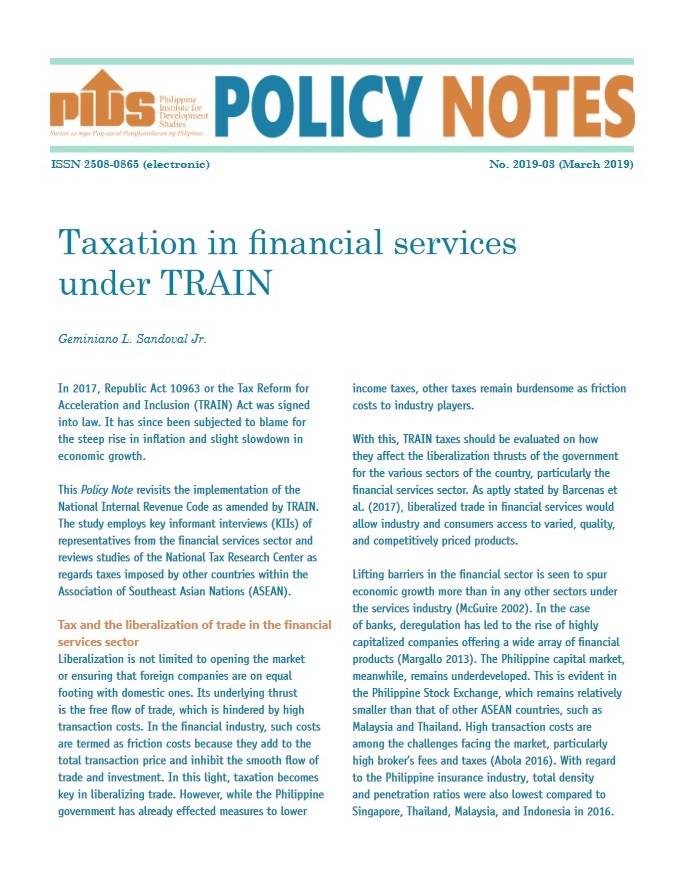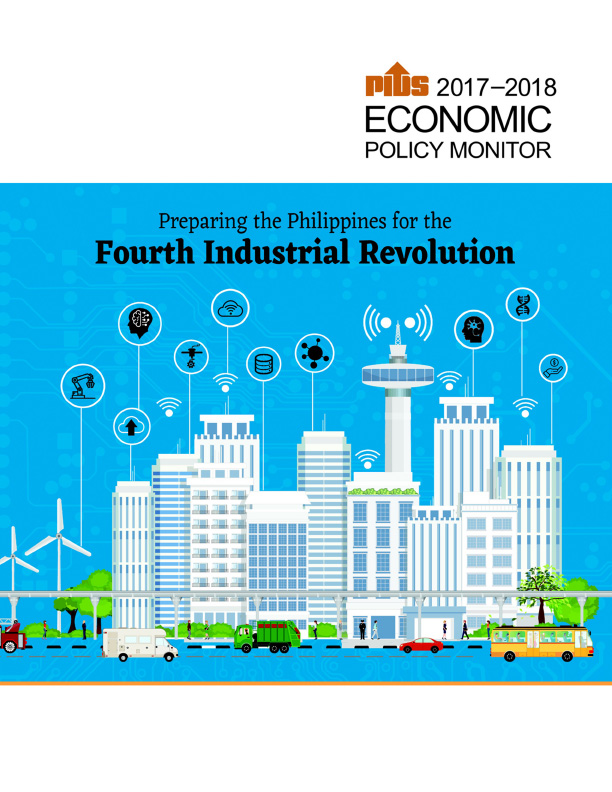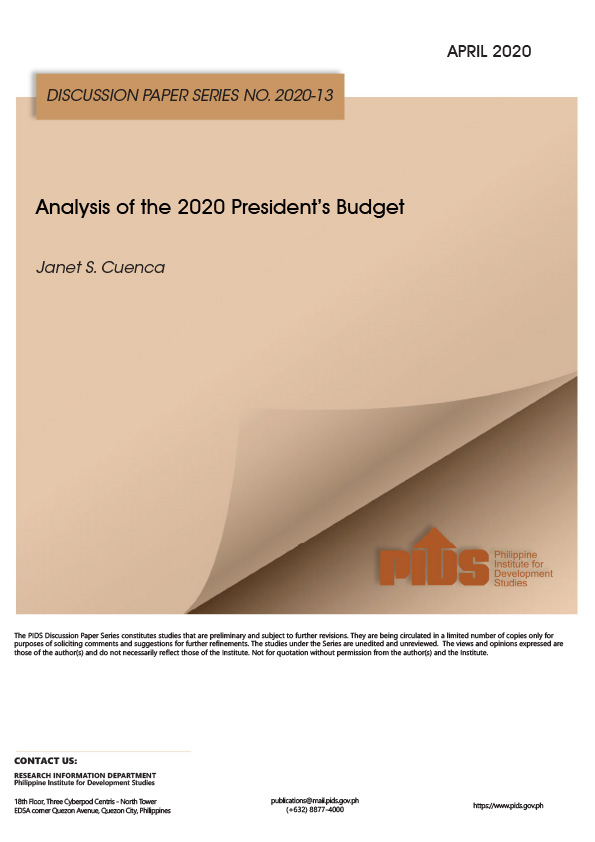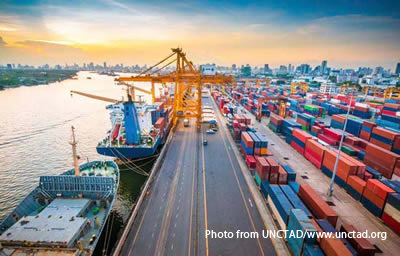I am pleased to share an economic brief my colleague, Christine Tang and I wrote for GlobalSource Partners (globalsourcepartners.com) a month ago.
The Secretary of Finance and the Bangko Sentral ng Pilipinas have likewise weighed in on the issue, stressing the importance of timely rice importation for price stability and supporting the call for liberalizing rice trade by many think tanks, including the Foundation for Economic Freedom (FEF) and the Philippine Institute for Development Studies.
To read the statement of the FEF, please visit the link http://bit.ly/FEFFB.
To read the PIDS Policy Note, “Quantitative restriction on rice imports: Issues and alternatives,” please visit the link http://bit.ly/PIDSQR or use a smartphone to scan the QR code.
This overdue reform measure will not only help stabilize prices, but also reduce poverty, wage uncompetitiveness, and relieve the public of wasteful government interventions.
In a column last Saturday, Dr. Mahar Mangahas observed that poverty indicators have bumped up notably recently, reversing a favorable trend. “Personally, I think the culprit is the rise in annual inflation to 3%, from only 1.5% the previous two years.”
He further noted that the simplest and quickest way to bring down the cost of food and hunger is to end the legal monopoly of the National Food Authority on foreign trade in rice and corn. We agree. Here is our April 12 brief.
Many economic watchers have raised concerns about recent increases in consumer prices. From below 2% in the 16 months to August 2016, the headline inflation rate climbed past 3% in February and March 2017, with the BSP expecting the uptrend to continue through 3Q17 when inflation is forecast to be ‘very close’ to the upper end of the 2-4% target band. Despite what seems like a rapid rise, inflation outturns, traced in part to price pressures from rising international crude oil and a weaker peso, are in line with our own expectations of the inflation path... so far.
An emergent risk that could “shock” inflation forecasts is government’s rice policy.
Last week, the President curiously and unceremoniously fired the undersecretary of one of his most trusted aides, Cabinet Secretary and Chair of the NFA Council, Leoncio Evasco, for supposedly insisting on importing rice. Without it seems consulting Secretary Evasco, the President announced during a harvest festival the dismissal of the deputy, adding that the National Food Authority (NFA) should buy from local farmers rather than import rice to build up buffer stocks.
Under the law, the NFA, which has a mandate to stabilize food prices to benefit consumers while supporting farm prices to benefit rice farmers (effectively to “buy high and sell low”), is required to hold 15 days’ worth of rice stocks at any time and 30 days’ worth during the lean months of July to September. It also has the exclusive right to import rice and the prerogative to allocate import quotas to private traders. Rice continues to be protected by quantitative import restrictions (QRs) under a waiver secured from the World Trade Organization (WTO) in 2014, a special treatment that is set to expire in June 2017.
The President’s stance created a fair amount of confusion and news reports following the announcement revealed a brewing struggle within the NFA. Apparently, the dismissed undersecretary was merely trying to implement an order of the NFA Council, the inter-agency governing body of the NFA, to allow private traders to import rice, an order that the NFA administrator reportedly refused to carry out. Apparently too, the issue is not whether to import or not; the NFA’s rice stocks as of March were equivalent to about 12 days’ worth of consumption and it would need imported stocks to meet the higher required buffer for the lean season. Rather, the issue appears to be whether the importation should be done by the NFA, favored by the NFA administrator, or by private traders, favored by the NFA Council.
The struggle that led to the President insisting on the NFA buying local rice risks the country’s rice stocks falling further (especially if domestic farm outputs fall short of expectations) and thus, domestic rice prices spiking. Rice accounts for close to 9% of the CPI basket and given the projected inflation path, double-digit increases during the lean months would push the headline inflation rate well over the upper end of the BSP’s inflation target band.
Two recent episodes of surges in rice prices are instructive. The more dramatic crisis in 2008 saw rice prices, as captured in the CPI basket, rising from over 10% in March to over 50% by July causing headline inflation to surge past 10% from June to October, with rice contributing as much as 4.7ppt to the headline rate. A milder episode happened in 2013-2014 when rice price inflation increased from 10% in January to over 14% in June 2014, adding over 1ppt to headline inflation throughout most of the year. The former was associated with very low NFA buffer stocks sustained over most of the previous year through 1Q08. The latter saw NFA stocks markedly below required buffers for only 4 months in late 2013/early 2014.
Will the country see a repeat of either of these episodes? As strange as it sounds, the answer depends on the President. With rice prices starting to inch up recently and import lags of anywhere from one to four months, a decision to allow importation would help allay fears of impending shortages that could lead to higher price increases in anticipation of the demand/supply gap.
To avoid delays in light of the internal NFA disagreement and ensure that a decision to import is quickly carried out, the President might as well decide also whether NFA itself should import or allow private traders to do it.
But that is not the end of it.
By July this year, WTO rules require the current QR on rice to be converted into tariffs. Economists are one is supporting this transition to free up the rice market, expected to have significant beneficial knock-on effects on food prices, wage rates, overall inflation, public finances not to mention the country’s competitiveness.
With the tariff-equivalent of the QR estimated at 40%, the oft-cited tariff rate to be put in place is 35% which appears to be a compromise rate to balance the interests of consumers and local producers. Other economists are advocating lower rates ranging from 10% to 30%.
From what we gather, this will not happen; at least not by July, nor perhaps anytime this year. Domestic law affords rice permanent protection under a QR regime which means that in order to “tariffy” rice, the law has to be amended by Congress.
And in another struggle, the President’s economic managers, who favor a tariff regime, are at odds with his Agriculture secretary, who favor a continuation of the QR regime. The former sent word to the WTO last month that the country will not extend the waiver on the QR and will instead impose tariffs, while the latter is reported to have informed the WTO lately that the conversion cannot be done due to the delay in amending the law.
Here again, we await the President’s decision. Hopefully, whispers we are hearing of a cordon sanitaire around the President and of economic managers being marginalized are nothing but political noise.
Romeo L. Bernardo is a board director of the Institute for Development and Econometric Analysis. He was undersecretary of Finance during Corazon Aquino and Fidel Ramos administrations.












